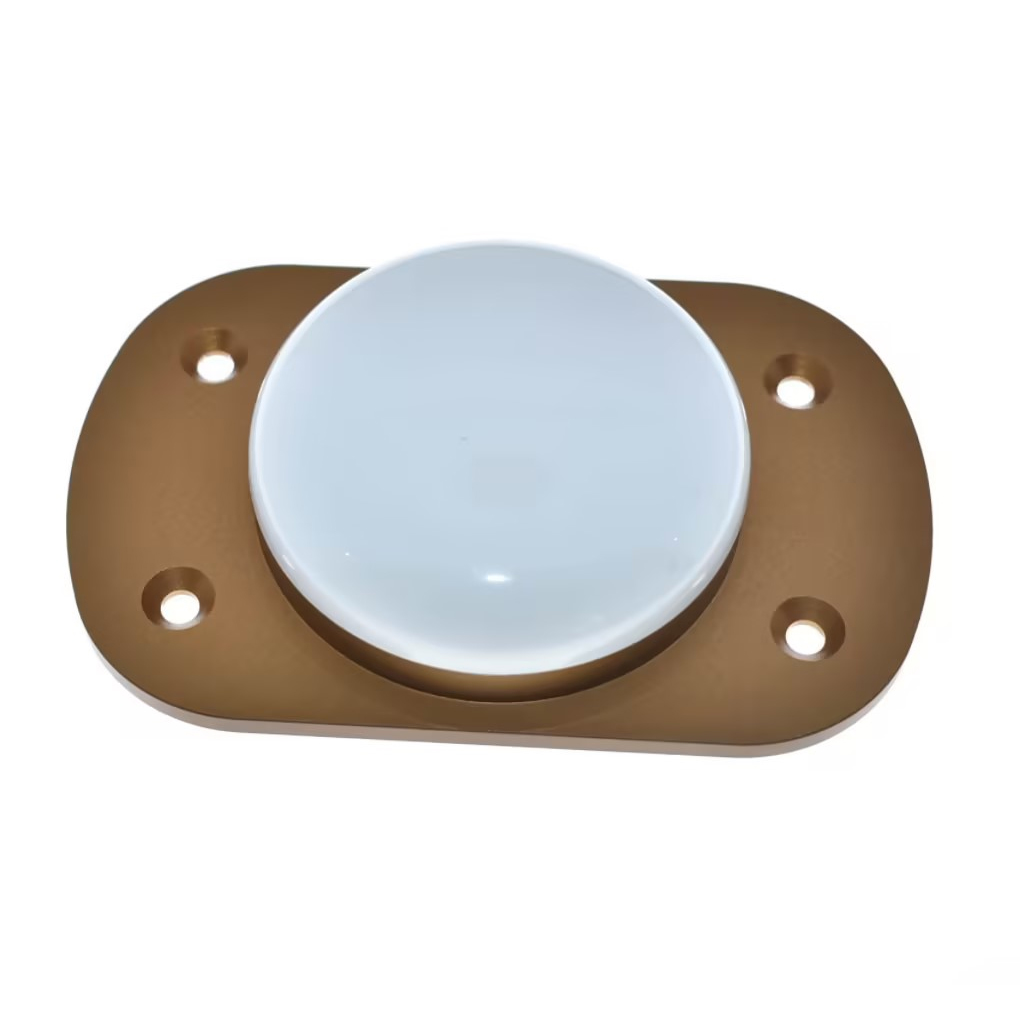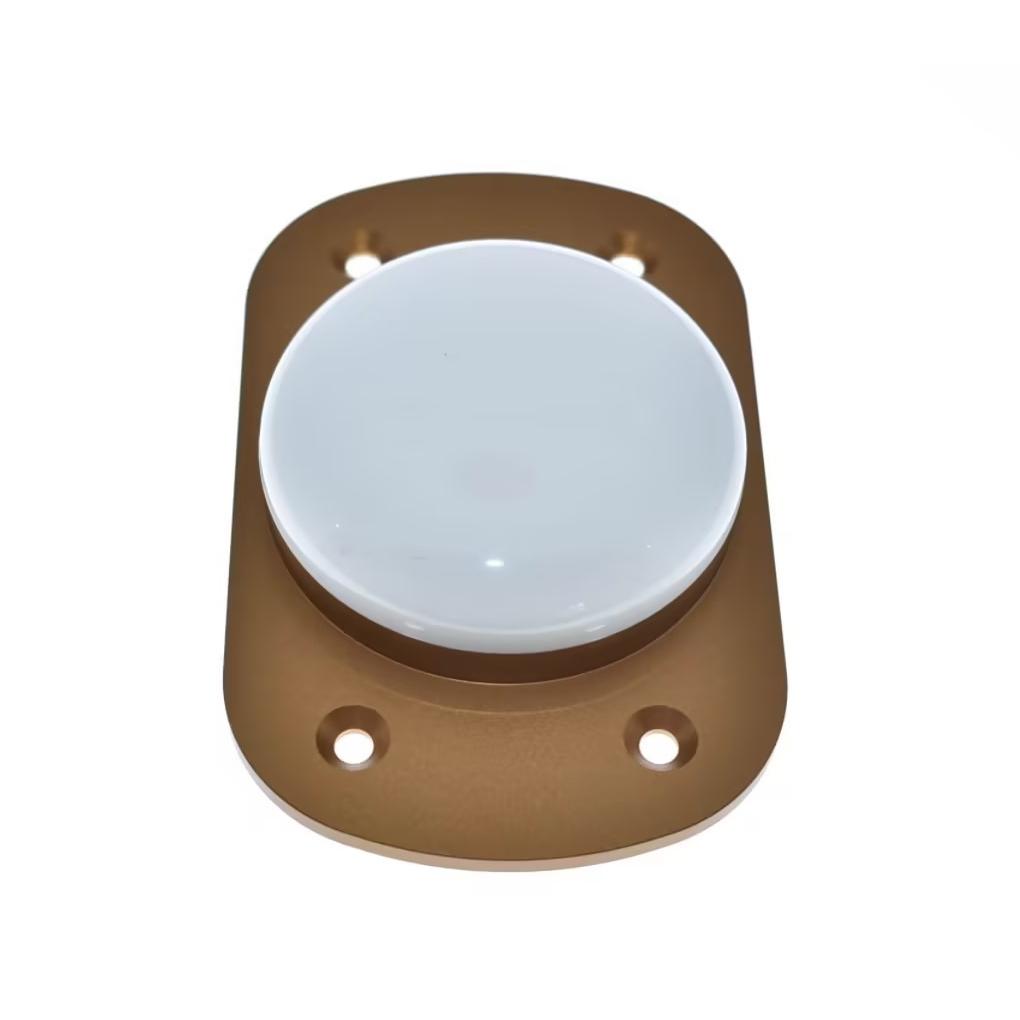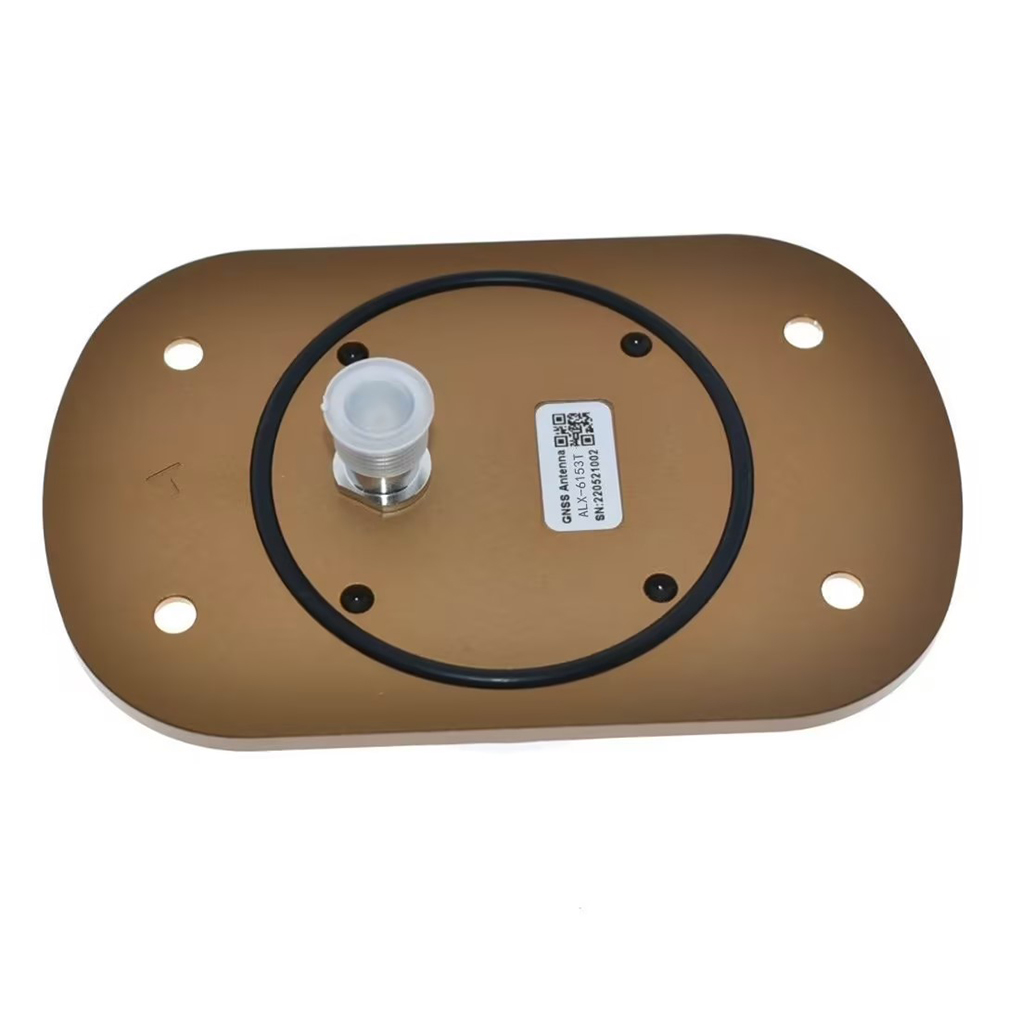Mechanical Specifications: Built for the Rigors of Flight
Dimensions and Weight: At 119.38mm x 76.2mm x 27.0mm and <185g, the antenna is compact and lightweight, ideal for mounting on aerial platforms where space and weight are at a premium.
Connector: A TNC-Female connector provides a secure, weatherproof connection to coaxial cables, ensuring reliable signal transmission even in vibration-prone environments.
Materials: The radome (outer casing) is made from ABS+PC, a durable plastic blend that offers excellent impact resistance and UV protection. The base is constructed from aluminum alloy 6061-T6, known for its high strength-to-weight ratio and corrosion resistance.
Attachment Method: Four screw holes allow for secure mounting to the aircraft or drone, preventing movement during flight that could cause phase center shifts or signal loss.
Vibration and Shock Resistance: The antenna can withstand 3G vibrations across three axes (10 to 200Hz) and 50G shocks on the vertical axis, ensuring reliability in rough flight conditions.
Environmental Specifications: Thriving in Extreme Conditions
Waterproof Rating: IP67 ensures that the antenna is dust-tight and can withstand immersion in up to 1 meter of water for 30 minutes, making it suitable for use in rain, snow, or wet environments.
Temperature Range: Operating temperatures from -40~+75°C and storage temperatures from -55~+85°C ensure that the antenna performs reliably in extreme weather conditions, from freezing high-altitude flights to hot desert operations.
Relative Humidity: 95% tolerance ensures that the antenna can operate in humid environments, such as tropical regions or coastal areas, without degradation.
Applications: Transforming Aerial Industries
The RTK aviation antenna’s unique combination of precision, durability, and anti-interference capability makes it indispensable across a range of aerial applications:
Drone Mapping and Surveying
Aerial mapping and surveying rely on accurate georeferencing of images to create detailed 3D models, topographic maps, and orthomosaics. The RTK aviation antenna’s high phase center stability ensures that each image is tagged with precise coordinates, eliminating the need for ground control points and reducing post-processing time.
In construction surveying, drones equipped with the antenna can quickly map job sites, track progress, and identify discrepancies between design plans and actual construction. The antenna’s ability to track signals in challenging environments—such as near tall buildings or under tree canopies—ensures that even complex sites are mapped with centimeter-level accuracy.
For environmental monitoring, the antenna enables drones to track changes in terrain, vegetation, or water bodies over time. Researchers can use this data to monitor deforestation, measure glacial retreat, or assess the impact of natural disasters, all with unprecedented precision.
Precision Agriculture
In precision agriculture, drones equipped with RTK technology are used to apply fertilizers, pesticides, and irrigation with pinpoint accuracy, optimizing resource use and maximizing yields. The RTK aviation antenna’s low-elevation signal reception ensures that drones can operate effectively even in fields surrounded by trees or hills, where satellite coverage might otherwise be limited.
The antenna’s compact size and low weight make it ideal for mounting on agricultural drones, which often have limited payload capacity. Its durability—including IP67 waterproofing and UV resistance—ensures reliable performance in the harsh conditions of farmland, where exposure to rain, dust, and sunlight is constant.
By enabling centimeter-level positioning, the antenna allows drones to follow precise flight paths, ensuring that treatments are applied only where needed. This reduces chemical use by up to 30%, lowering costs and minimizing environmental impact.
Manned Aviation and Urban Air Mobility
As urban air mobility (UAM) emerges as a new frontier in transportation—with electric vertical takeoff and landing (eVTOL) vehicles promising to revolutionize urban travel—reliable, precise navigation becomes critical. The RTK aviation antenna’s anti-interference capability and phase center stability make it an ideal solution for eVTOLs, ensuring safe navigation in crowded urban airspace.
In manned aviation, the antenna enhances the performance of GNSS-based navigation systems, providing pilots with more accurate positioning data for takeoff, landing, and en-route navigation. This is particularly valuable in remote areas where ground-based navigation aids are limited, or in poor weather conditions where visual references are unavailable.
The antenna’s ability to withstand extreme temperatures and vibrations also makes it suitable for military aviation, where reliability in harsh environments is paramount. Military drones and aircraft can use the antenna to perform reconnaissance, surveillance, and targeting missions with pinpoint accuracy.
Search and Rescue Operations
Search and rescue (SAR) missions require rapid, accurate positioning to locate missing persons or survivors in remote or hazardous environments. Drones equipped with the RTK aviation antenna can cover large areas quickly, providing rescuers with real-time, precise coordinates of targets.
The antenna’s ability to track signals in challenging environments—such as dense forests, mountainous terrain, or urban rubble—ensures that drones can operate effectively even where satellite coverage is limited. Its durability allows it to withstand the harsh conditions often encountered in SAR missions, from heavy rain and strong winds to extreme temperatures.
By providing centimeter-level positioning, the antenna enables rescuers to pinpoint the exact location of a target, reducing search time and increasing the chances of a successful rescue.




































































 Language
Language
 En
En Cn
Cn Korean
Korean

 Home >
Home > 







 18665803017 (Macro)
18665803017 (Macro)













